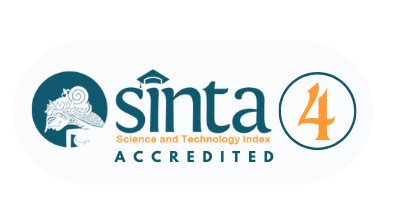Collaborating Blended Learning Model into Content Representation Product Design at Eleventh Grade English Subjects
DOI:
https://doi.org/10.33633/es.v2i1.2541Abstract
The design development of the CoRe (Content Representation) model is another model of the lesson plan that is applied using the Blended learning model. The purpose of this study is to design and validate the suitability of CoRe products with the high school syllabus. The method used by using descriptive quantitative method based on the stages of R and D (Research and Development), especially in seven stages, namely; research and data collection, planning, initial product development, piloting and refinement of initial products, testing and refinement of products that have been refined for final product testing, and disseminated, implemented and institutionalized. The results obtained are the valid lesson plan design plan with CoRe used in teaching English to high school class XI students. The activity of students also increased by showing a positive response and the results of the daily pre-test and post-test exercise improved well. In addition, the CoRe Model can also be used to help teachers improve Pedagogical Content Knowledge in the teaching and learning process.References
Abell, S.K., Park Rogers, M.A., Hanuscin, D.L., Gagnon, M.J., & Lee, M.H. (In press). Preparing the next generation of science teacher educators: A trajectory for developing PCK for teaching science teachers. Journal of Science Teacher Education.
Benthall, Nigel. 2008. Blended Learning: Setting the Course for the “Crew Changeâ€.
E. Mulyasa. 2008. Menjadi Guru Profesional Menciptakan Pembelajaran Kreatif dan Menyenangkan. Bandung : PT. Remaja Rosdakarya.
Hariadi, Bambang. 2000. Pemanfaatan Internet (SICYCA) Sebagai Sumber Belajar di STIKOM Surabaya. Tesis Tidak Diterbitkan. Universitas Negeri Malang
Hume, A. (2010). Cores as Tools for Promoting Pedagogical Content Knowledge of Novice Science Teachers. Chemistry Education in New Zealand May 2010
Hume, A., & berry, A. (2010). Constructing CoRes—a strategy for building pCk in pre-service science teacher education. Research in Science Education, 41(3), 341–355. doi: 10.1007/s11165-010-9168-3.
Loughran, J., mullhall, p., & berry, A. (2004). in search of pedagogical content knowledge in science: developing ways of articulating and documenting professional practice. Journal of Research in Science Teaching, 41(4), 370–391.
Loughran, J., berry, A., & mullhall, p. (2006). Understanding and developing science teachers’ pedagogical content knowledge. Rotterdam, the netherlands: sense publishers.
Loughran, J., mulhall, p., & berry, A. (2008). Exploring pedagogical content knowledge in science teacher education. International Journal of Science Education, 30(10), 1301–1320.
Martinis Yamin. (2008). Desain Pembelajaran Berbasis Tingkat Satuan Pendidikan. Jakarta : Gaung Persada Press.
Rohann, E., taconis, R., & Jochems, W. (2010). Reviewing the relations between teachers’ knowledge and pupils’ attitude in the field of primary technology education. International Journal of Technology and Design Education, 20(1), 15–26.
Soedijarto, 2008. Landasan dan Arah Pendidikan Nasional Kita. Jakarta : Kompas
Soegiyono. 2010. Metode Penelitian Pendidikan (Pendekatak Kualitatif, Kuantitatif dan R&D). Bandung : Alfabeta.
Sukmadinata, Nana syaodih. 2009. Metode Penelitian Pendidikan. Bandung : Remaja Rosdakara.






















